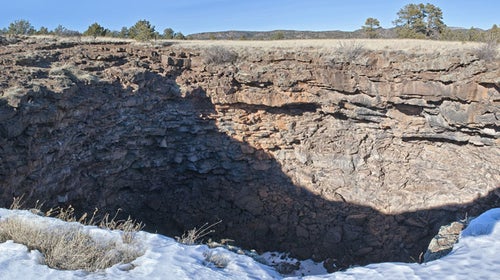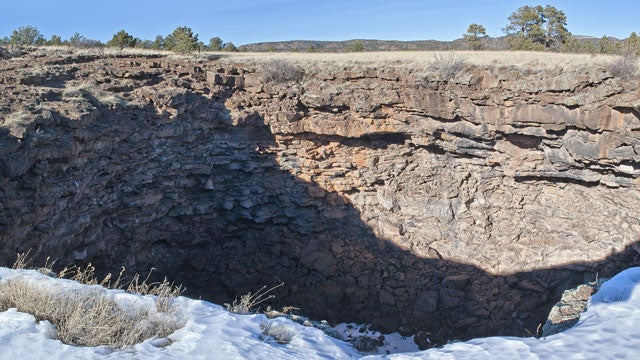Sinkholes are regular occurrences in nature. “They happen every day,” says Randall Orndorff, the Director of Eastern Geology and Paleoclimate Science Center at the U.S. Geological Survey. But it doesn’t necessarily follow that outdoors enthusiasts need to worry.
Anytime you have what Orndorff calls “a void in the subsurface”—like a cave, for instance—you have the potential for the ground to collapse. Often, a void is formed when water drains into the ground and begins to eat away at the subsurface rock – rainwater is acidic to begin with, and it picks up carbon dioxide during its passage through the soil, becoming a carbonic acid capable of dissolving soluble rocks like limestone and gypsum. Terrain with this sort of soluble rock base is called karst, and it makes up 20% of the U.S.
That’s the basic process for a natural sinkhole. But of course, there are man-made sinkholes, too. We create subsurface voids all the time, Orndorff points out: water mains, sewer lines, storm drains. All of them fill the prerequisites for sinkhole occurrence. Pavement and buildings – “impervious surfaces,” says Orndorff – don’t let water seep into the ground slowly, the way it does in the woods. Instead, it runs off in concentrated streams, into sewers and ditches, and enters the subsurface in a torrent instead of a slow leak. “Agricultural activities also pump a lot of groundwater,” says Orndorff, which can lower the groundwater table and destabilize the soil.
So, yes, sinkholes appear to be on the rise, and they’re increasingly occurring in inhabited areas. But most urban sinkholes are very small, no larger than the size of a sewer main. “Very seldom do we have a situation like Florida,” says Orndorff.
Still, he adds, “I think people need to be vigilant. Do I live in an area that has the potential? In the natural environment, it’s a matter of knowing, do I live on terrain that has soluble rock?” (The USGS is working on maps of the country’s sinkhole-prone terrain.) “After that, it’s a matter of keeping your eyes open.”
As for that backpacking trip you’re planning in karst country, Orndorff says it’s unlikely you’ll find yourself tumbling into an abyss. If anything, the biggest risk might be on the drive to the trailhead. “Most sinkholes, tell you the truth, occur on highways,” he says.

